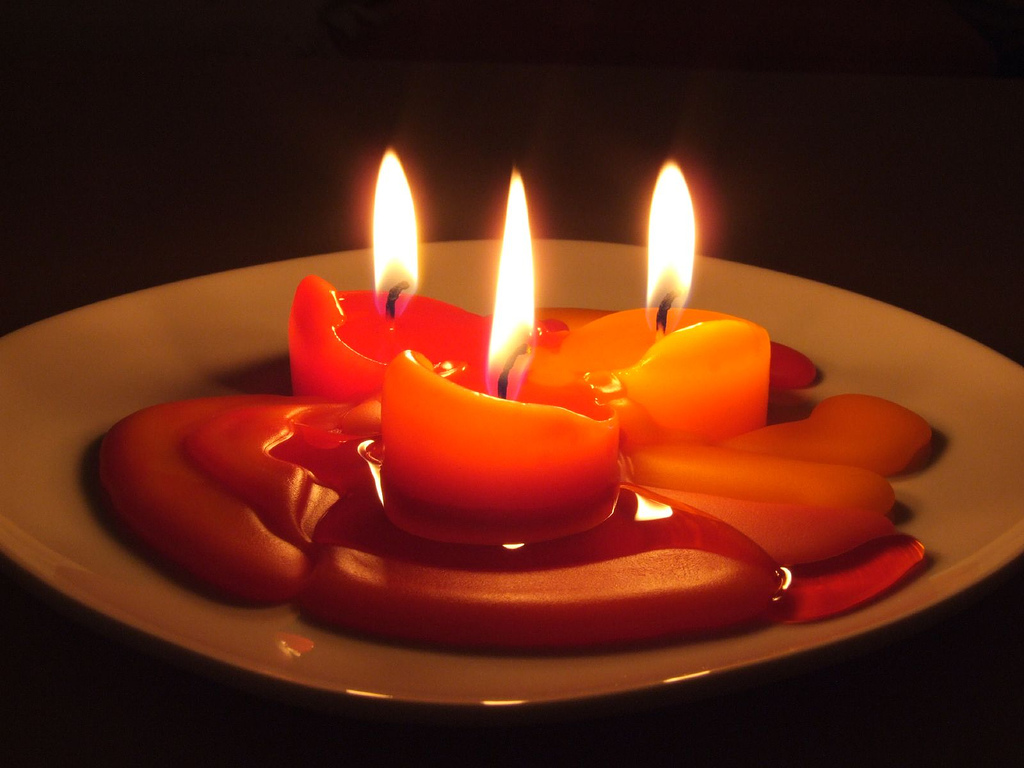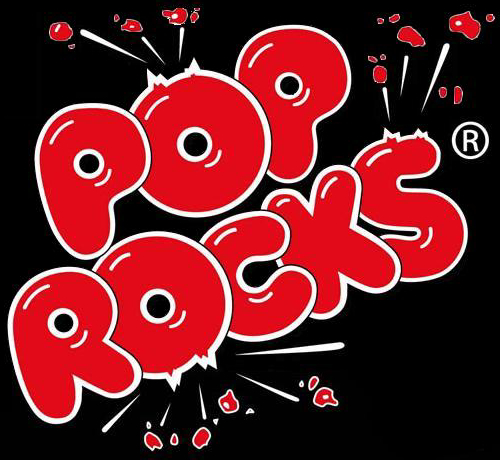Who doesn't like yogurt? You? No? Not you? Your friend? You best friends moms uncle's cousin's wife's brother? Ya him? Okay cool. But since you do like yogurt let me tell you the chemistry behind it. It is all made from some old milk and bacteria. Sounds delicious right? But u said you liked it...so..... The milk is fermented by bacteria. The lactose in the milk, C12H22O11, changes to lactic acid C3H6O3. This makes the milk thicker and it lowers the pH level. The acidity of the fermentation gives the tanginess to the yogurt. Then from there you can add the flavoring like strawberry, bayberry, and stickberry! Do you see what I did there? Like straw, hay, and stick like the cows eat the.....whatever.......I know you really understood and you just did not want to admit it. :p
http://chemistry.about.com/od/foodscienceprojects/a/Yogurt-Chemistry.htm
Wednesday, February 26, 2014
Pop Rocks!!!!!
Pop rocks are a very popular candy that is out on the market. Some people believe that a boy died from eating pop rocks and chugging some soda which is very untrue. That could not cause you to die what so ever. Then thing that makes pop rocks pop in your mouth is the carbon dioxide that is trapped in the candy. When the saliva dissolves then candy the carbon dioxide is released and it pops in your mouth. I never knew that pop rocks contain carbon dioxide just like soda although not as much. The pop rocks are not dangerous so I'm pretty sure that eating them is safe.
http://chemistry.about.com/od/howthingsworkfaqs/f/poprockscandy.htm
http://chemistry.about.com/od/howthingsworkfaqs/f/poprockscandy.htm
Wednesday, February 19, 2014
Glowing fish!!!!???!!?!?!??!?!?
Sarah, over at Avogadro's salad, mentioned that scientist have discovered that some species of fish can glow in the dark. Like what??? How does that even happen???? Scientists were originally made to detect environmental pollutants. They added a florescent gene to the fish to make them glow. And since then they have become very popular.They emit light after a certain type of radiation this relates to chemistry because it talks about light and how it is emitted from a fish.

(follow Sarah at http://avogadrosalad.wordpress.com/page/2/)
http://www.popsci.com/article/science/fish-fluorescence-widespread-180-species-found-glow
https://www.google.com/search?q=glofish&safe=active&rlz=1C1KAFA_enUS512US512&espv=210&es_sm=93&source=lnms&tbm=isch&sa=X&ei=a-EDU9qRLofs0QH0h4GQAw&ved=0CAkQ_AUoAQ&biw=1920&bih=979#facrc=_&imgdii=_&imgrc=vhLJp8gdx6l5AM%253A%3BJTVk34IoWpuYWM%3Bhttp%253A%252F%252Fwww.glofish.com%252Ffiles%252FUpdated_Slide3_v2.jpg%3Bhttp%253A%252F%252Fwww.glofish.com%252F%3B1400%3B575
http://www.glofish.com/about/faq/

(follow Sarah at http://avogadrosalad.wordpress.com/page/2/)
http://www.popsci.com/article/science/fish-fluorescence-widespread-180-species-found-glow
https://www.google.com/search?q=glofish&safe=active&rlz=1C1KAFA_enUS512US512&espv=210&es_sm=93&source=lnms&tbm=isch&sa=X&ei=a-EDU9qRLofs0QH0h4GQAw&ved=0CAkQ_AUoAQ&biw=1920&bih=979#facrc=_&imgdii=_&imgrc=vhLJp8gdx6l5AM%253A%3BJTVk34IoWpuYWM%3Bhttp%253A%252F%252Fwww.glofish.com%252Ffiles%252FUpdated_Slide3_v2.jpg%3Bhttp%253A%252F%252Fwww.glofish.com%252F%3B1400%3B575
http://www.glofish.com/about/faq/
Tuesday, February 18, 2014
cupcakes and elements?
Tflstar89 also known as Tara to most people made a great post about the chemistry of baking and how baking powder and baking soda are used because they release carbon dioxide and make the cupcake fluffy because of the air pockets. I also did my own research abput that and found out that baking is all based onb chemical reactions and they help with the process of baking to make anything from a pie to a cupcake. This relates to chemistry becuase it talks about carbondioxide and that baking is a science and not just a fun hobby.


http://tflstar89.wordpress.com/
http://www.acs.org/content/dam/acsorg/education/outreach/2000-ncw-fall-edition-get-cooking-with-chemistry.pdf
(Follow tflstar89.wordpress.com)
Tuesday, February 11, 2014
chemistry puns and jokes
What did the chemist say when he found two isotopes of helium? He He This relates to chemistry because the element helium has the symbol He and when the chemist found two isotopes it became two He's this making the joke hilarious. Although the correct way to write it is He2 but to make it seem like the chemist was laughing. There are many other jokes that have to do with chemistry and they use the chemical symbol as well and the manipulate them in some way to make them seem like they are funny.

http://chemistry.about.com/od/chemistryjokes/a/Chemistry-Jokes.htm
http://chemistry.about.com/od/chemistryjokes/a/Chemistry-Jokes.htm
Quick! Sand!
Quick sand is made of primarily sand obviously, water, salt, and clay. There are large gaps in the sand filled with water and when it is disturbed it starts to sink. it is turned from a jelly feeling to a liquid essentially. As soon as the mixture is disturbed the sand sinks to the bottom and he water floats to the salt. The salt as soon as the clay becomes a liquid the salt becomes electrified and they bond together and they form bigger particles that surround the body part. They best way to get out of quick sand is to make small circles with the trapped body part to mix the water and clay once again and then you can essentially get out. This relates to chemistry because it talks about bonding and how you can break and regain the bond. i never knew that you could get out of quick sand. 
http://www.thenakedscientists.com/HTML/articles/article/whatisquicksand-1/

http://www.thenakedscientists.com/HTML/articles/article/whatisquicksand-1/
Thursday, February 6, 2014
Candle wax where you at?
I have always wondered where the wax from a candle goes when it is burned. In my room I am always reluctant to light my candles because the wax just disappears and in not time i have to get a new candle. So whenever there is a sale i am tempted to by like 14 because i know the candle wax will diminish if and when i burn it. I searched this up on the compute and i found out that the Wax burns into water and carbon dioxide which are bot omitted to the air around the candle. Wax is made of hydrogen and carbon atoms that are linked together. The heat vaporizes the wax and then it reacts with the oxygen and poof its gone. No wonder..... But this does relate to chemistry because it talks about hydrogen and oxygen bonds and how they can diminish under the right circumstances.


http://chemistry.about.com/od/howthingsworkfaqs/f/candlewax.htm
Monday, February 3, 2014
colored snow
Did you know that there can be colored snow? Well there can be the most common type of colored snow is green snow. What cause the snow to be green is the algae that grows on it. It can also be different colors based upon the type of algae that grows on the snow.
 Green Snow. It can also be called watermelon snow because it can have the sweet smell of watermelon. and it can also come in the color red. The chlorophyll that makes the algae green also has a second red carotenoid, which protects the algae from ultra violent light and has the ability to obtain energy to melt snow and give the algae water to survive. Also the snow can react with pollutants in the air to make it form colors like orange. This pertains to chemistry because it talks about light and how it affects the algae and how it protects the algae form UV lights. I never knew that algae could grow on snow. This was a very interesting topic.
Green Snow. It can also be called watermelon snow because it can have the sweet smell of watermelon. and it can also come in the color red. The chlorophyll that makes the algae green also has a second red carotenoid, which protects the algae from ultra violent light and has the ability to obtain energy to melt snow and give the algae water to survive. Also the snow can react with pollutants in the air to make it form colors like orange. This pertains to chemistry because it talks about light and how it affects the algae and how it protects the algae form UV lights. I never knew that algae could grow on snow. This was a very interesting topic.
http://chemistry.about.com/od/environmentalchemistry/a/colored-snow-chemistry.htm
 Green Snow. It can also be called watermelon snow because it can have the sweet smell of watermelon. and it can also come in the color red. The chlorophyll that makes the algae green also has a second red carotenoid, which protects the algae from ultra violent light and has the ability to obtain energy to melt snow and give the algae water to survive. Also the snow can react with pollutants in the air to make it form colors like orange. This pertains to chemistry because it talks about light and how it affects the algae and how it protects the algae form UV lights. I never knew that algae could grow on snow. This was a very interesting topic.
Green Snow. It can also be called watermelon snow because it can have the sweet smell of watermelon. and it can also come in the color red. The chlorophyll that makes the algae green also has a second red carotenoid, which protects the algae from ultra violent light and has the ability to obtain energy to melt snow and give the algae water to survive. Also the snow can react with pollutants in the air to make it form colors like orange. This pertains to chemistry because it talks about light and how it affects the algae and how it protects the algae form UV lights. I never knew that algae could grow on snow. This was a very interesting topic.http://chemistry.about.com/od/environmentalchemistry/a/colored-snow-chemistry.htm
Subscribe to:
Posts (Atom)

